Emmanuel Pichereau brings over 17 years of experience to the table in the field of visual effects. His career path has traversed various studios such as MPC, DNEG, and One of Us. Notable entries on his filmography include Prometheus, The Midnight Sky, The Matrix Resurrections, and Luther: The Fallen Sun.
What is your background?
I began my career as a compositing artist in Paris in 2007, primarily working on commercials. In 2011, I made the move to London, where I had the opportunity to work for several reputable studios, including MPC and DNEG, before eventually finding my home at One of Us, initially starting as a Comp Supe for 4 years before progressing to VFX Supervisor. In 2016, I returned to Paris whilst maintaining a close collaboration with One of Us. During this time, I was also freelancing intermittently, collaborating on some fun and creative Jonathan Glazer projects. Then in 2021, alongside Rachael Penfold, Dominic Parker and Tom Debenham we created One of Us Paris, where I serve as the Creative director of our French studio.
How did you and One of Us get involved on this show?
Netflix approached us early in the development phase of Damsel, and we immediately established a close collaboration with their team and the filmmakers during pre-production. We were looking at early designs for the dragon from the production designer and thinking about how to bring it to life as a dynamic character that could seamlessly interact with MBB and the surrounding environment. During filming, we leveraged our Virtual Set Visualiser, which is an iPad app that allowed us to visualise the scale of our dragon through augmented reality, and consider how to film something that wasn’t physically present – what angles and lenses would be required to achieve the desired effect. We also produced detailed concept art to help us anticipate the look for extreme close-up shots, drawing inspiration from creatures in nature to ensure authenticity.
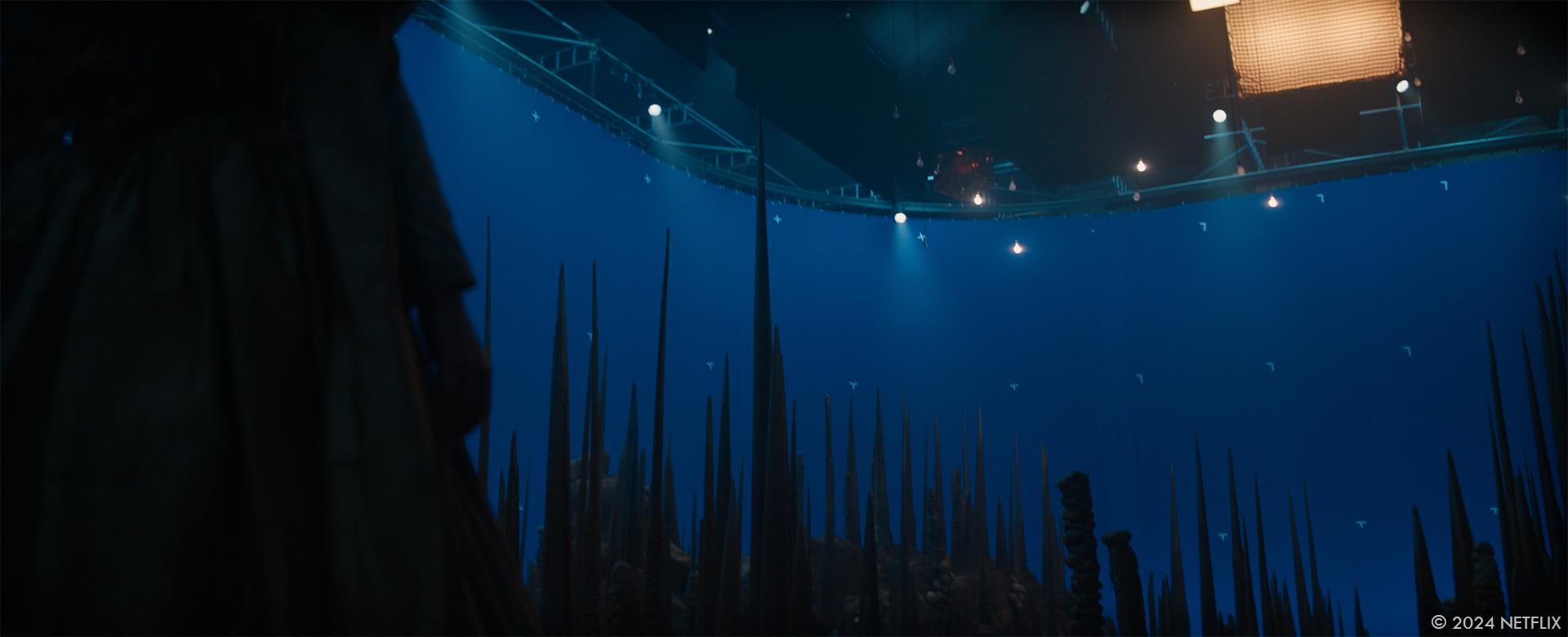
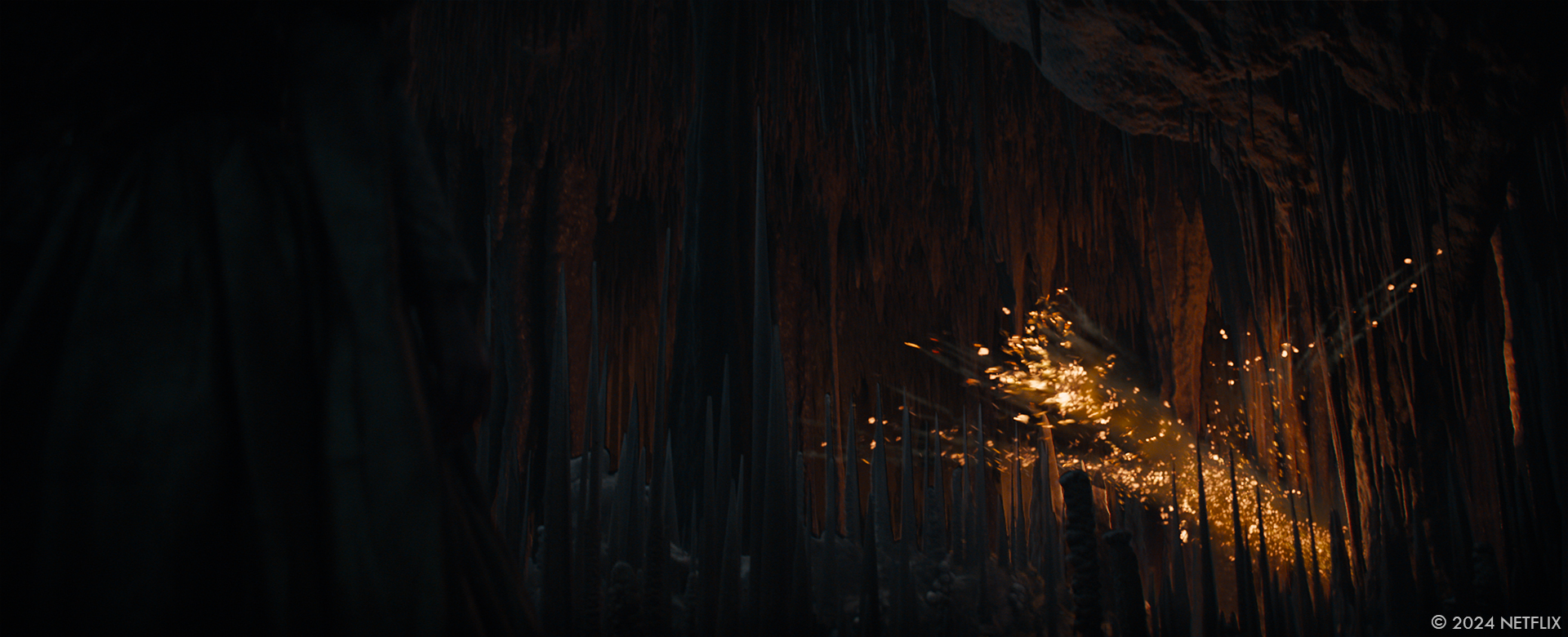
How was the collaboration with director Juan Carlos Fresnadillo and VFX Supervisor Nigel Denton-Howes?
Nigel was our primary point of contact on the project, as the production VFX supervisor, and was incredibly supportive of our team. Working on a project of this scale, particularly with a hero creature, presented its share of challenges- Nigel consistently pushed us to exceed expectations, sharing his vision and knowledge with us to collaborate on the best approach while prioritising storytelling, realism, and aesthetic vision. Our collaboration with Nigel has not only enriched our work but also instilled a profound sense of pride in our ability to adapt to the obstacles we overfaced. We’d love to work with him again!
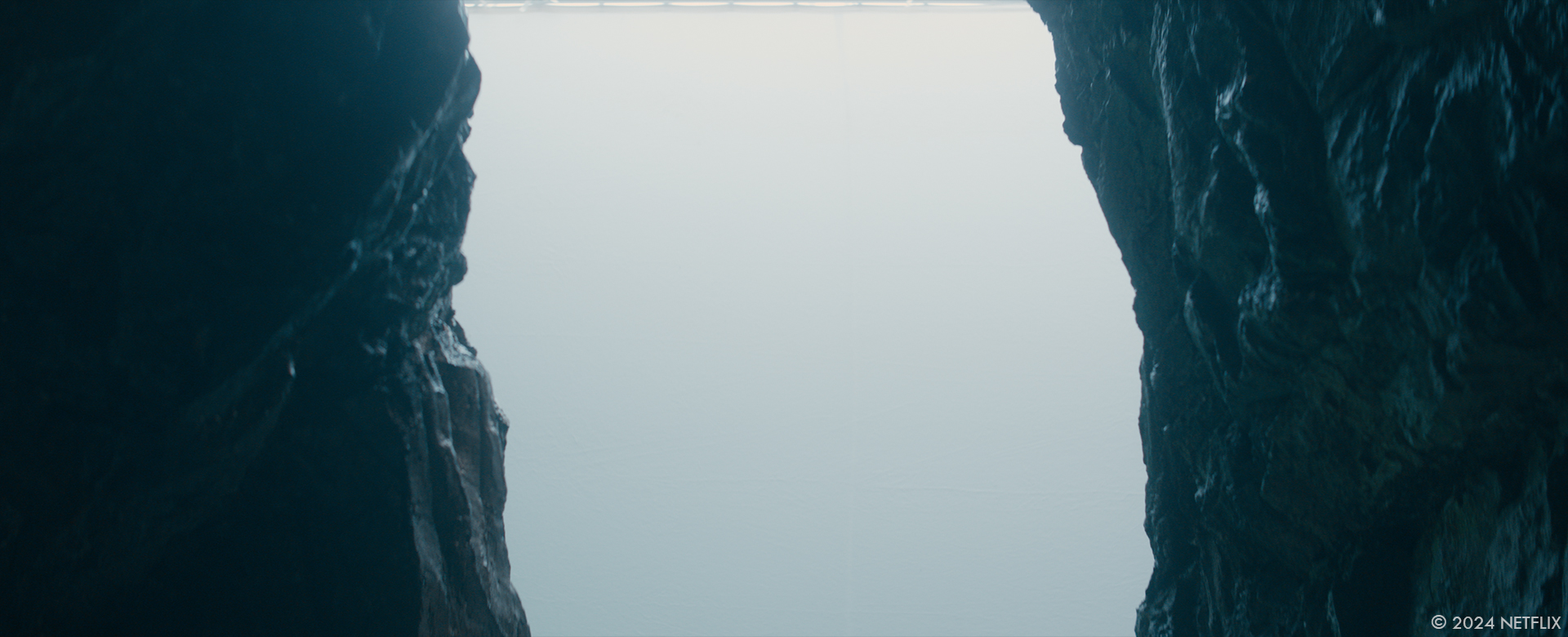
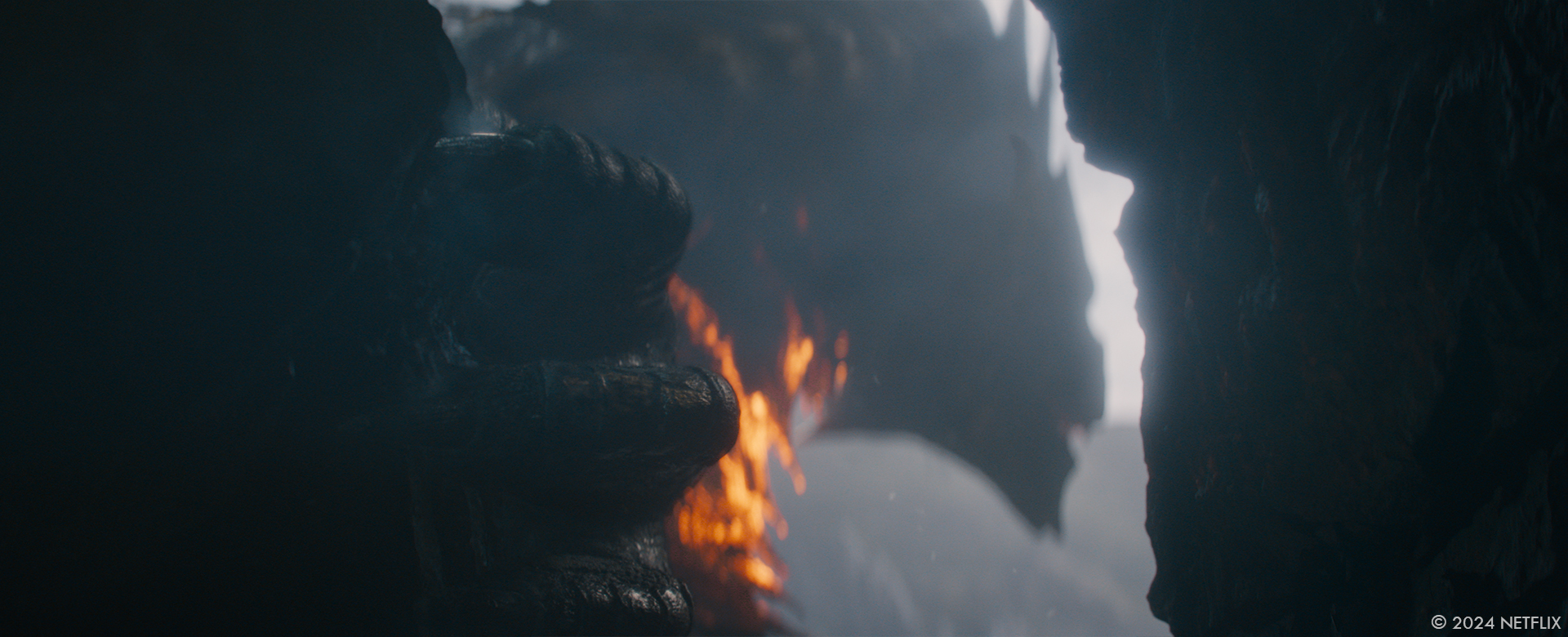
How did you organise the work of your VFX Producer?
As the largest show we had undertaken to date, the show presented a significant challenge for us, not necessarily in terms of the volume of shots – approximately 450 in total- but rather due to the complexity of the bulk of shots which involved hero dragon, CG environment and extensive FX working harmoniously. In light of this, establishing a robust framework built on trust and collaboration was key. Rather than organising our efforts by department, we opted to approach the project by sequence, ensuring seamless communication flow between departmental teams.
Working closely with Catherine Martin and Shannyn Zorab, our VFX producers, our focus was to always keep an eye on the big picture, whilst trusting our team to delve into the finer details of the workflow. We set clear production and creative objectives, aligned ourselves and made sure it was as clear as possible for the team, and divided the workload into manageable units which allowed the sub teams to tackle their tasks in a contained creative space whilst our Producers kept a holistic focus on the progression of the project to make sure we were pushing forwards. The team we had was amazing, the calibre of talent at One of Us is exceptional, and that led us to produce some of our most beautiful work to date.
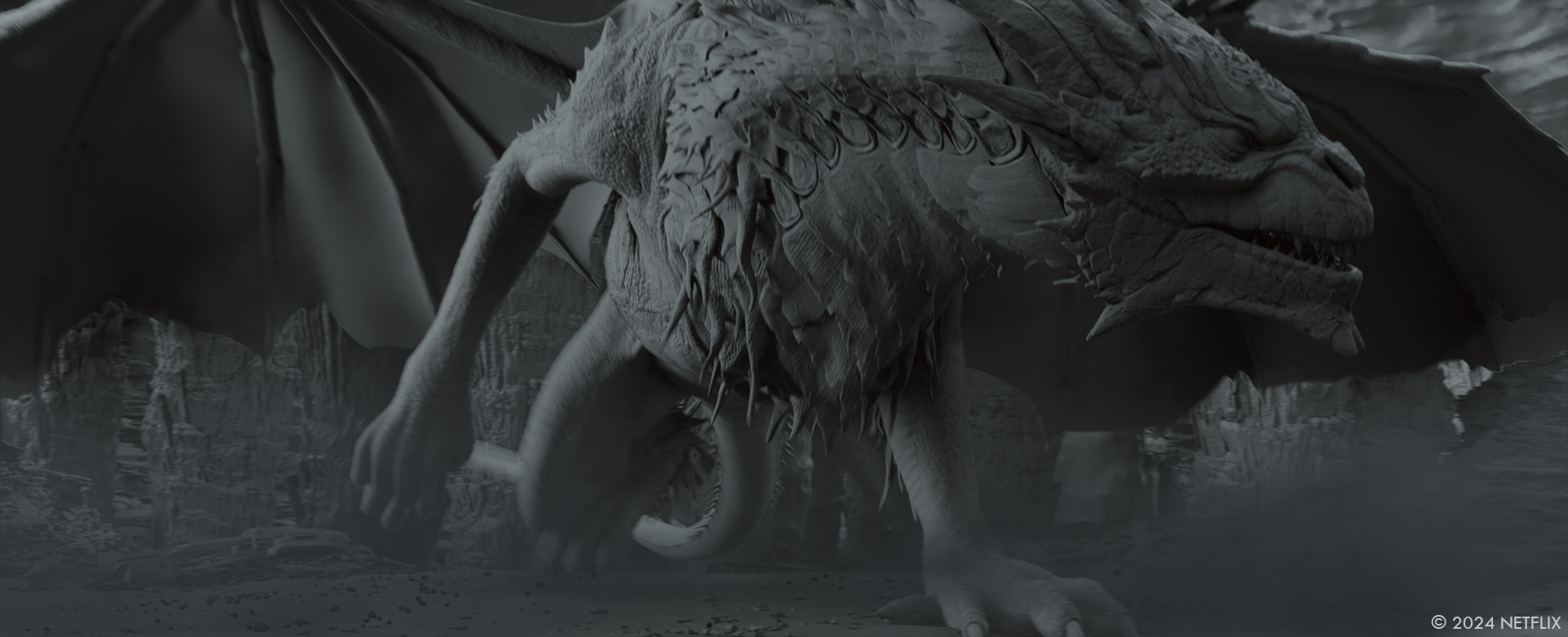
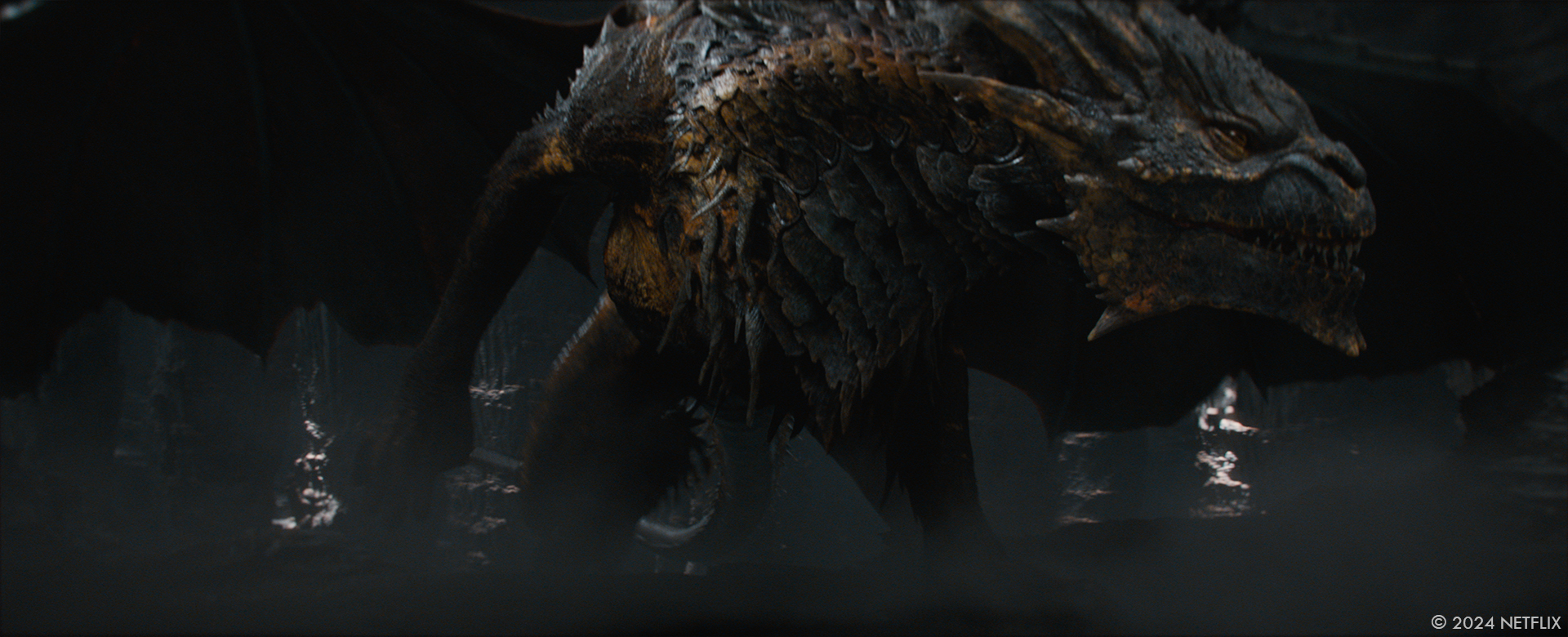
What are the sequences made by One of Us?
We worked on all of the sequences inside the mountain cave with the dragon, including the burning bird cave sequence, dragon’s entrance and the final battle between Elodie and the dragon (Bird Cave, Temple Cave, Elodie escape, Dragon’s Lair, Dragon Death, Glow Worm, Ledge Attack, Twisted Tunnel.)
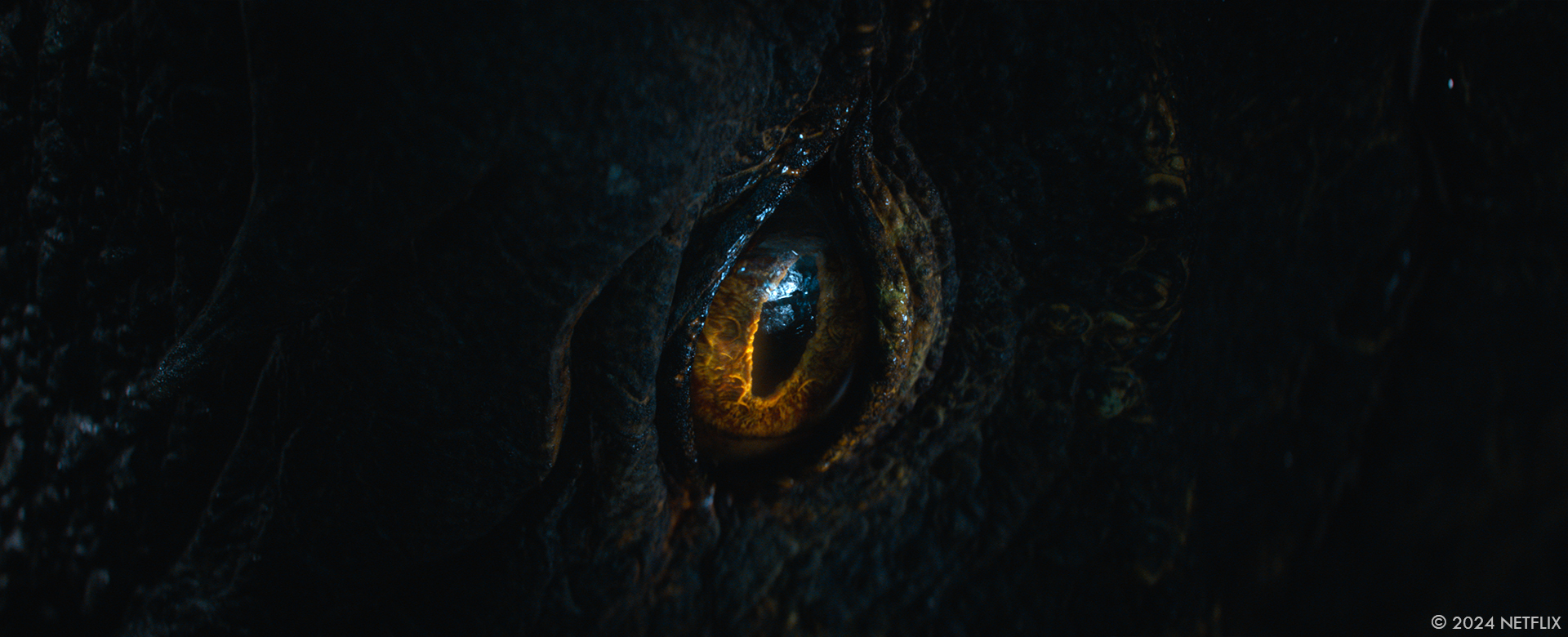
Could you walk us through the design process of creating the impressive dragon for Damsel, from concept to completion? What were some of the key inspirations behind the visual aesthetics of the dragon?
Guided by Patrick Tatopoulos’ concept, we underwent a session with him to refine the approach to transitioning from concept to CG creature. Drawing inspiration from reptiles and mammals such as turtles, crocodiles, snakes, and bats, we meticulously adjusted details such as the texture and colour, ensuring consistency and realism. Challenges arose in rendering details like the orange patterns and spikes realistically, which required careful consideration of light interaction and shader variation. Addressing the wings presented another hurdle; to avoid a flat appearance, we introduced flexible scales to enhance depth and light interaction. Every element, from the eyes to the wings, demanded meticulous attention to detail and commitment to realism, showcasing the intricate process of bringing a fantasy creature to life while maintaining a sense of authenticity.
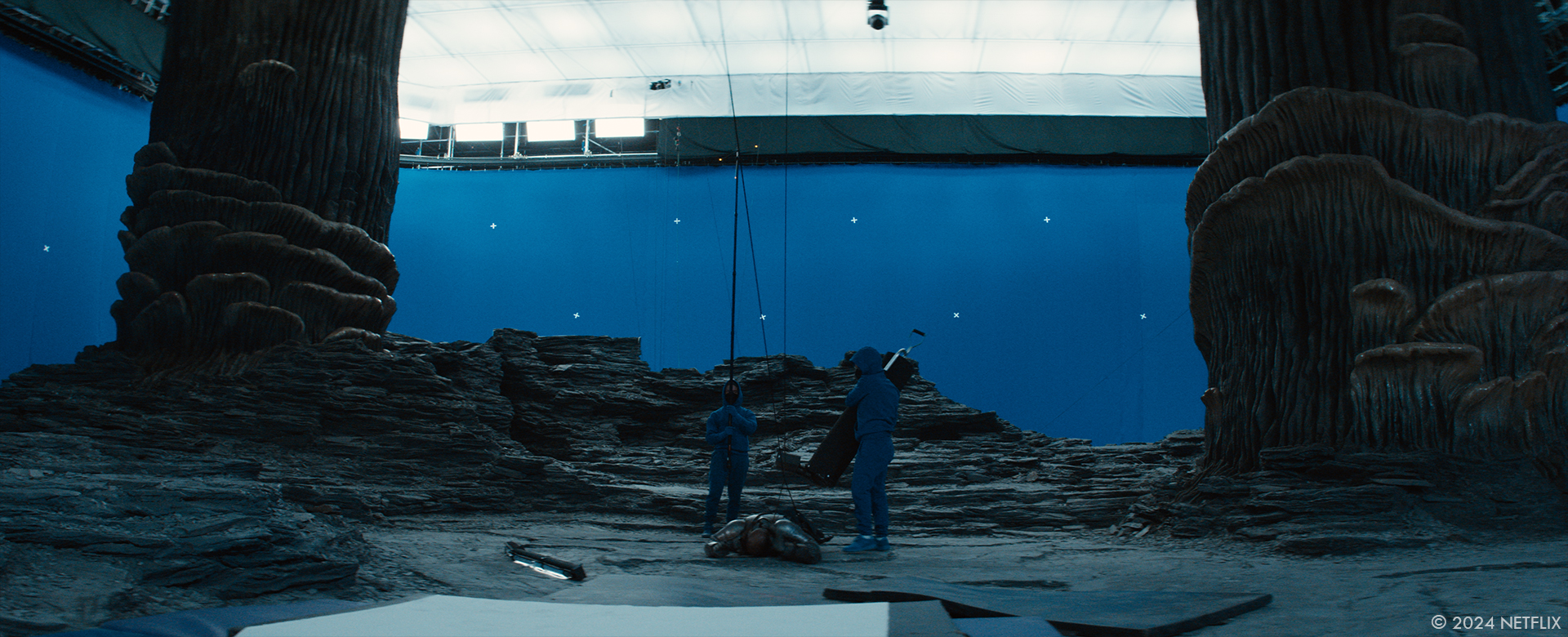
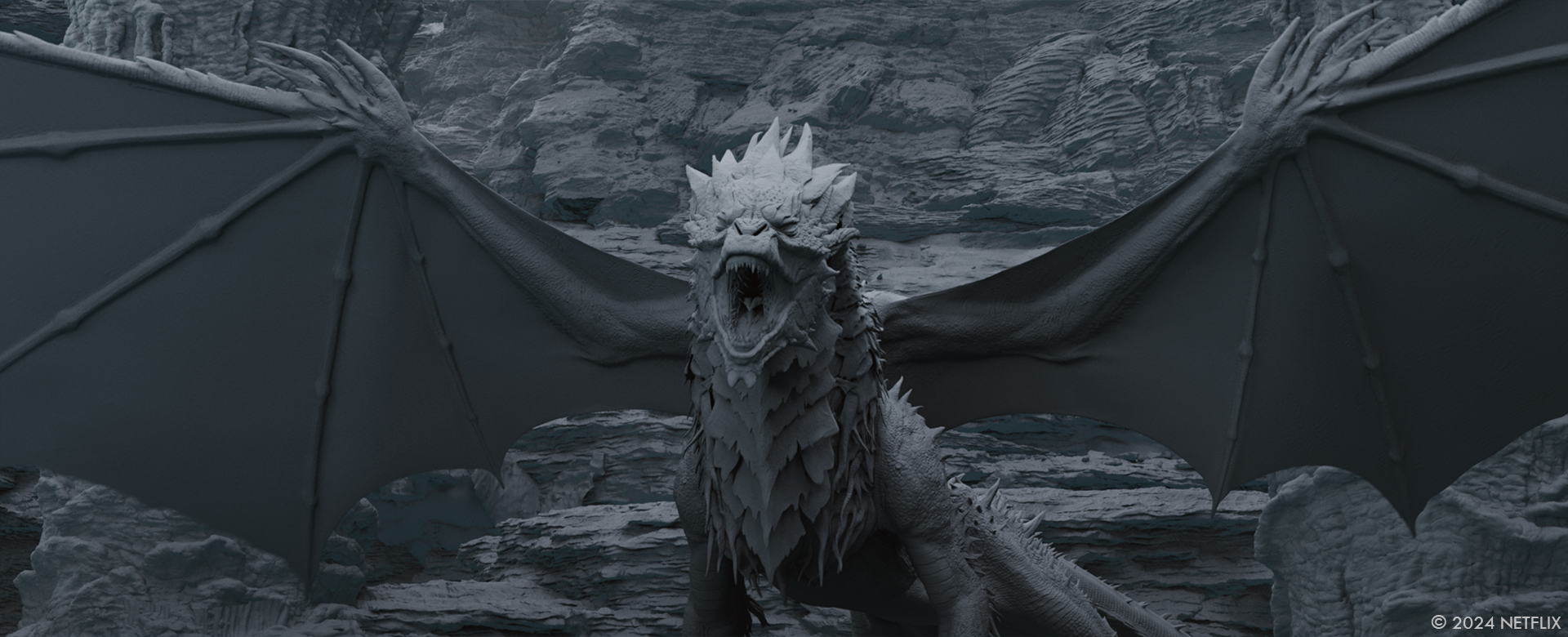
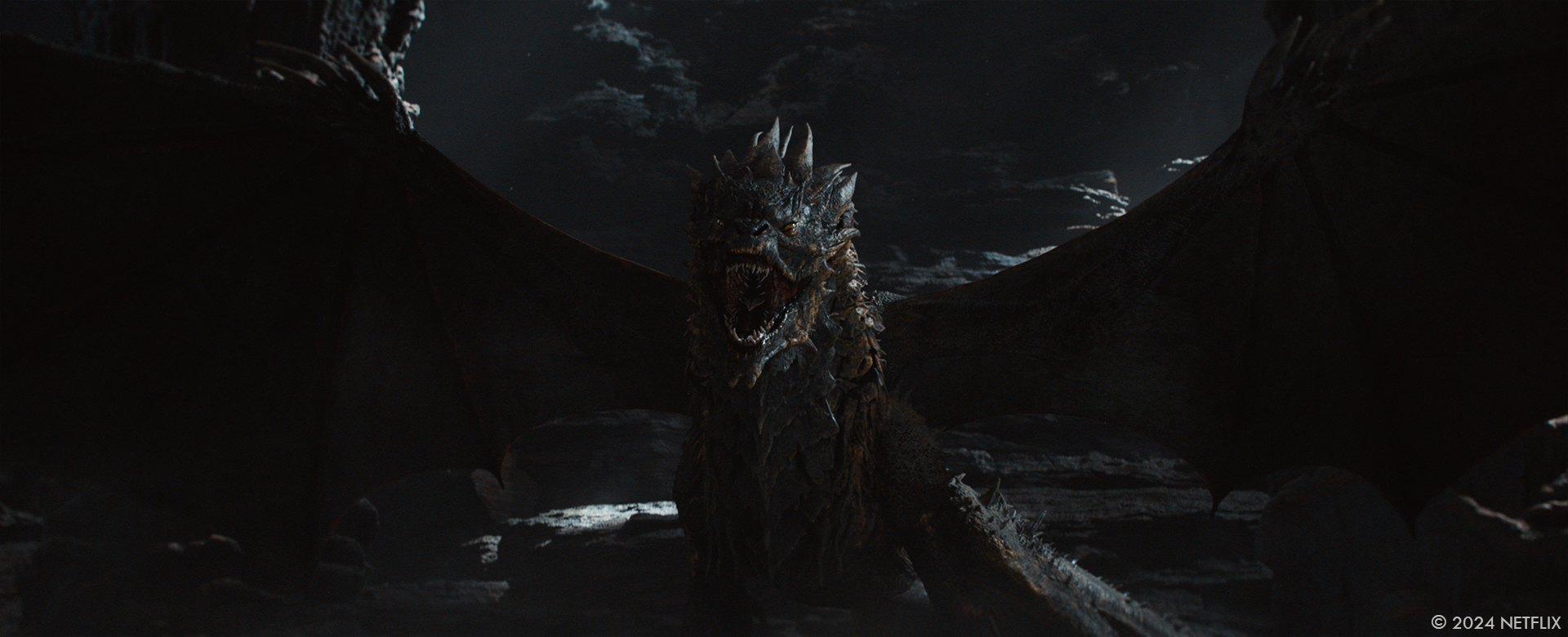
How did you approach the challenge of balancing realism and fantasy in the design of the dragon?
As I mentioned, our primary focus was ensuring we were referencing nature to ensure realism but also experimenting to come up with a new dragon design which was unique. Additionally, we also considered the dragon’s backstory, envisioning her as a long-standing inhabitant of her environment. This influenced our depiction, as we began incorporating subtle details such as dust on her skin to reflect her history and environment. By blending these elements thoughtfully, we achieved a design that strikes a delicate balance between realism and fantasy, enhancing the believability of the character within the story’s context.
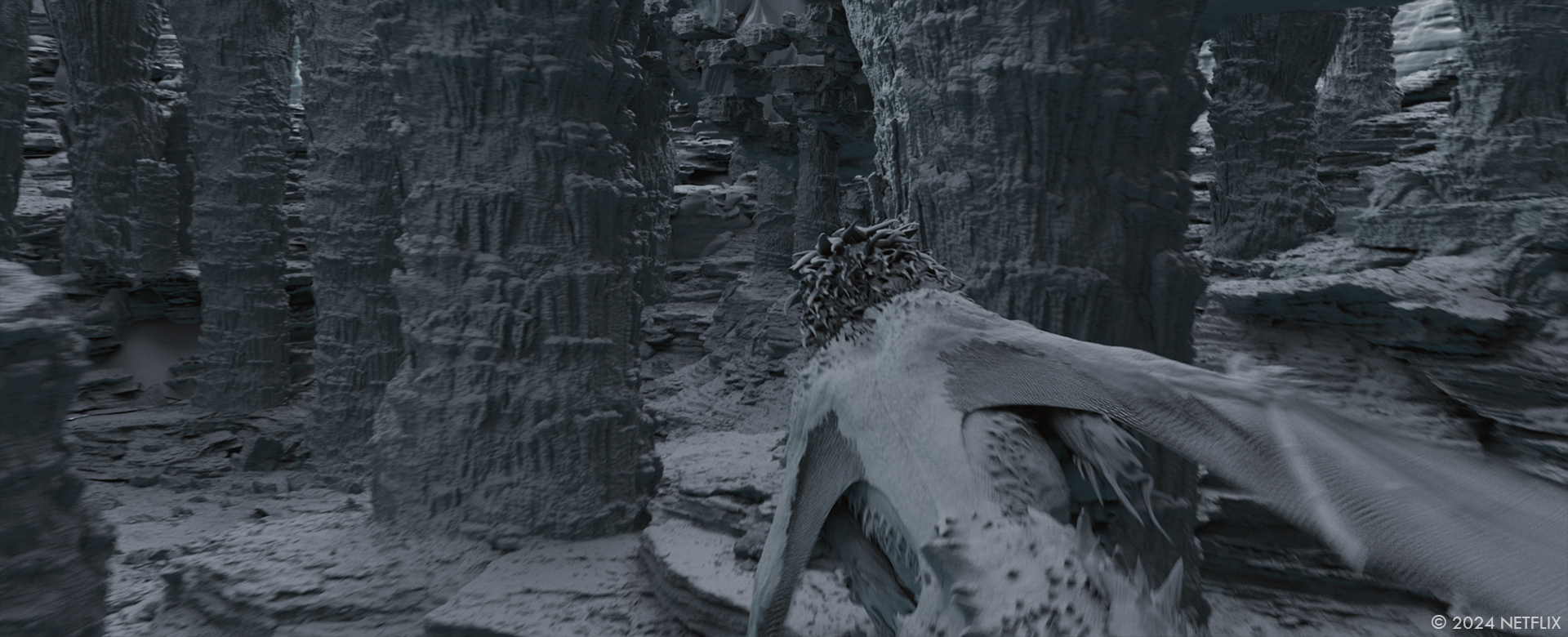
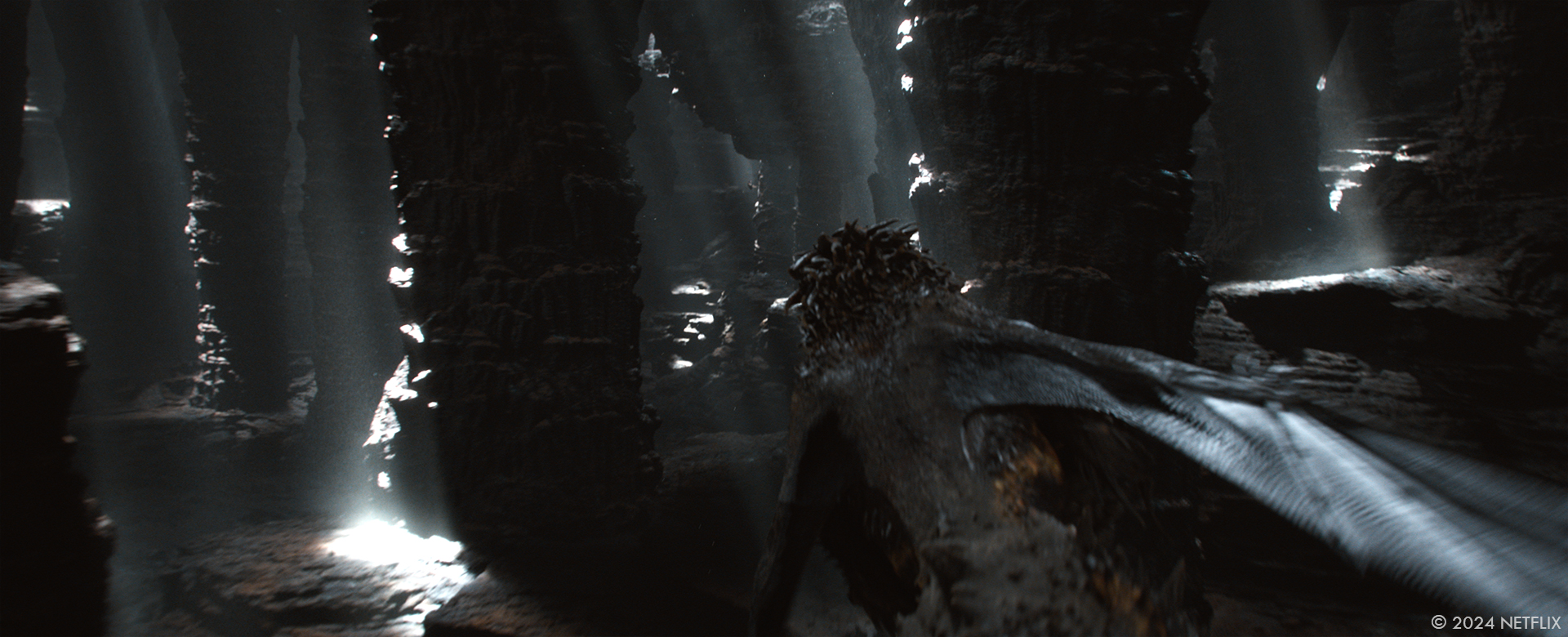
That’s the first big creature for your studio. How did you adapt your team and methodology for it?
We aimed to apply our unique creative approach and expertise to a project of this scale, seeking innovative solutions to streamline complexity. We had to expand our animation team to our largest size yet- the project had the largest crew size and longest schedule to date at One of Us. We had to rethink our pipeline, but building within our existing tools. Our strategy involved having some of our key CG artists working closely with the Pipeline team to create those tools that would allow us to be more fluid and have automation lessen some of the burden. Internally, we separated sequences within two different units, which allowed us to spread the workload but also improved our cross-departmental collaboration so we had a better flow of communication.This approach ensured that every department contributed to the film’s success as part of a cohesive team effort.
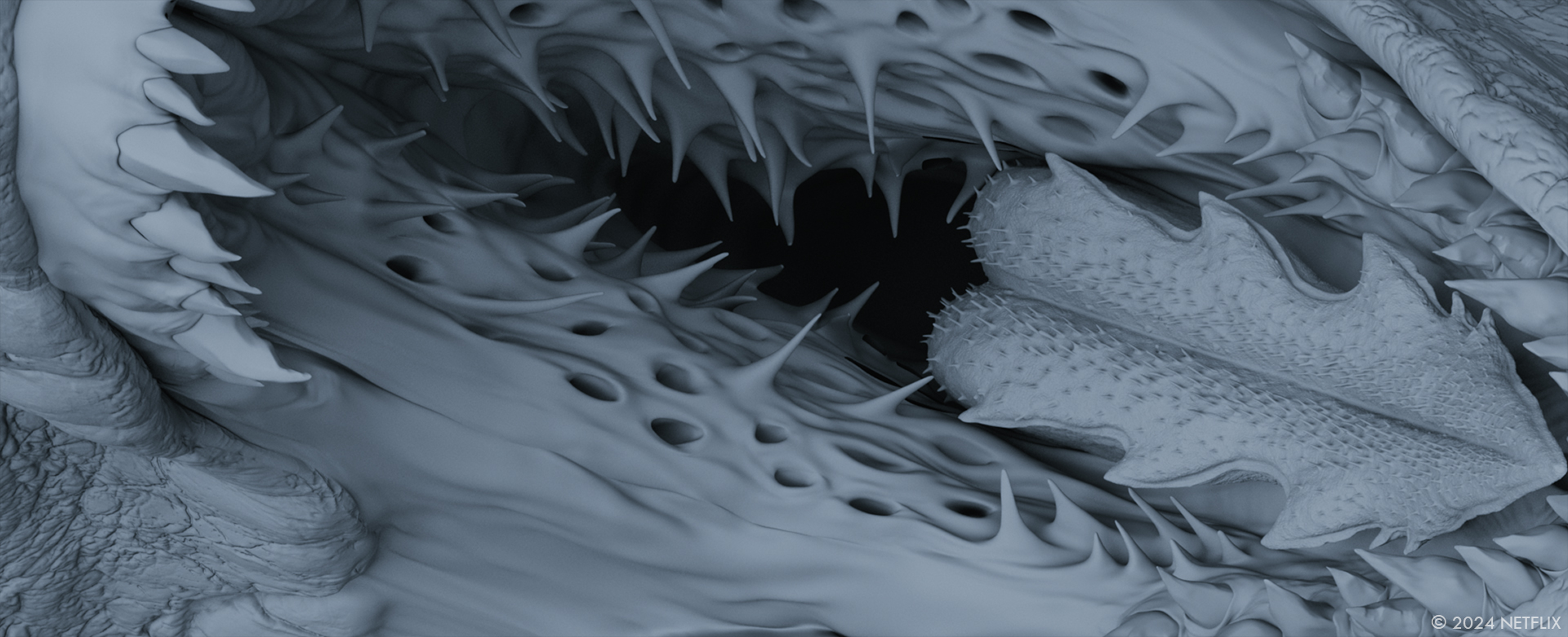
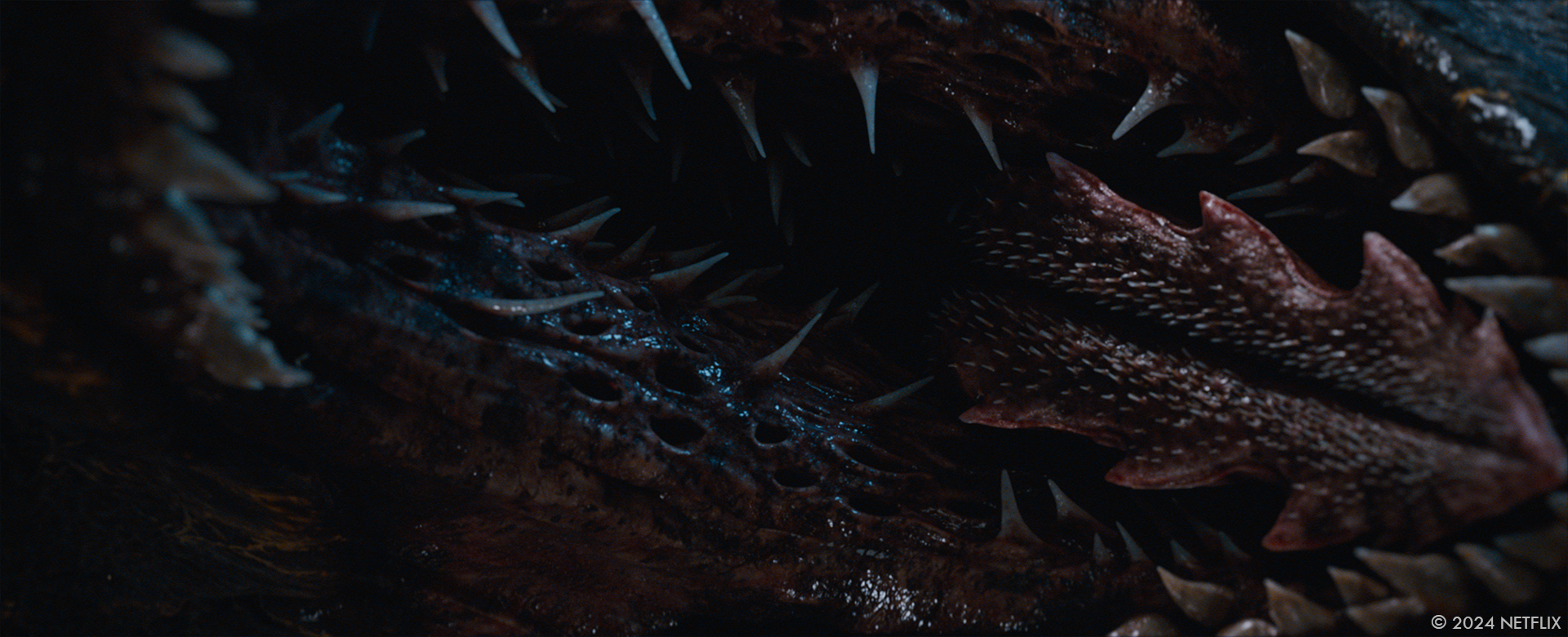
Can you discuss the technical aspects involved in animating the dragon’s movements to make them appear lifelike?
In terms of animation I’ll defer to the expertise of our Animation Supervisor, Brett Margules, who spearheaded this aspect of the process. His leadership served as inspiration for the whole team, not just his discipline.
Our approach involved extensive use of video references, covering a wide variety of big cats to capture different behaviours and actions. Given the dragon was uniquely quadrupedal, a strong understanding of animal anatomy was a must for the animators. We also referenced large birds of prey, particularly focussing on their expansive wing spans, and even analysed slowed-down footage of bats flying to better understand the wings, membranes and skeletal behaviour in flight for the dragon.
However, whilst these references provided valuable starting points, everything needed to be creatively altered to accommodate the dragon’s scale and mass, highlighting the need for innovative adjustments to achieve the desired effect in animation.
What role did storytelling play in shaping the design and animation choices for the dragon?
The dragon is consistently merciless and vengeful throughout the majority of the film based on her centuries long feud with the Kingdom of Aurea. However, there was a strong deviation from this where the dragon is almost maternal when she is guarding Floria. She gently narrates to her broken eggs (while remembering the pain of their loss) and softly caresses Floria while setting a trap for Elodie.. it was a very unique moment in the film to see the dragon as something other than a pure killing machine, and as more of a complex and misunderstood creature with her own story to tell.
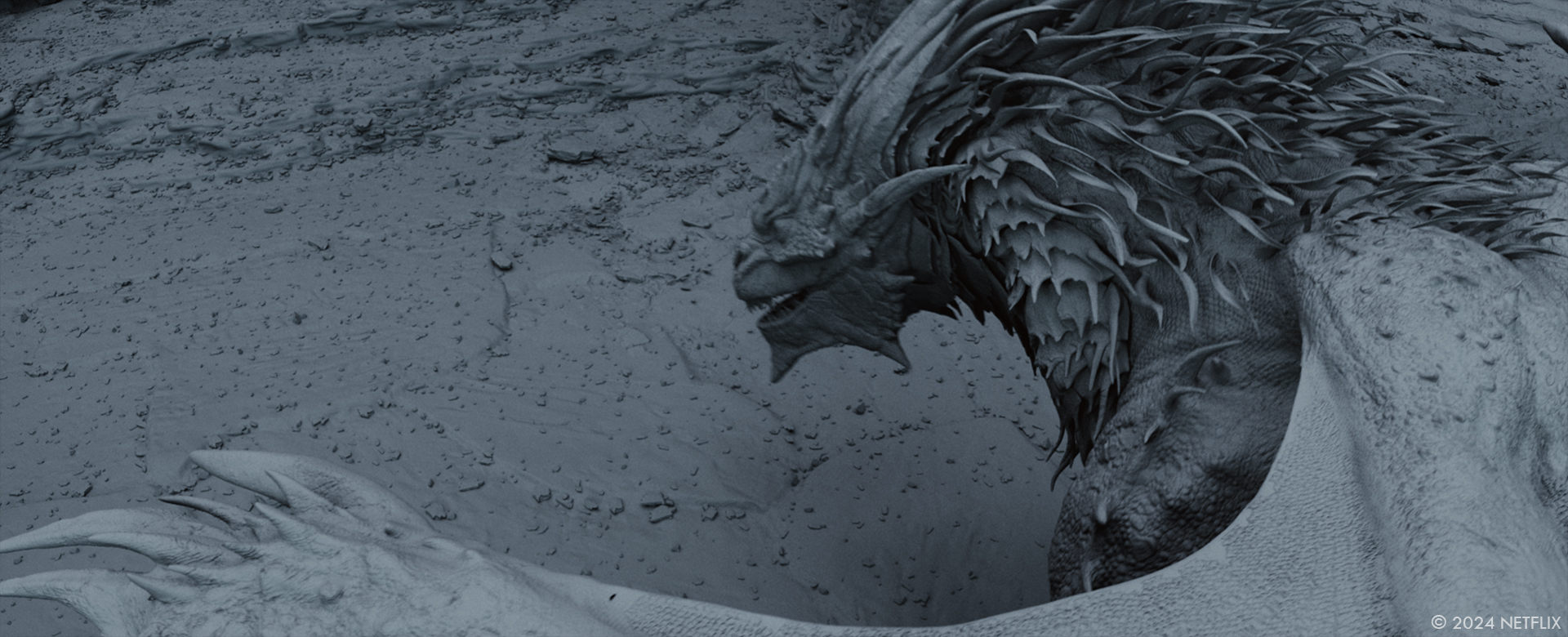
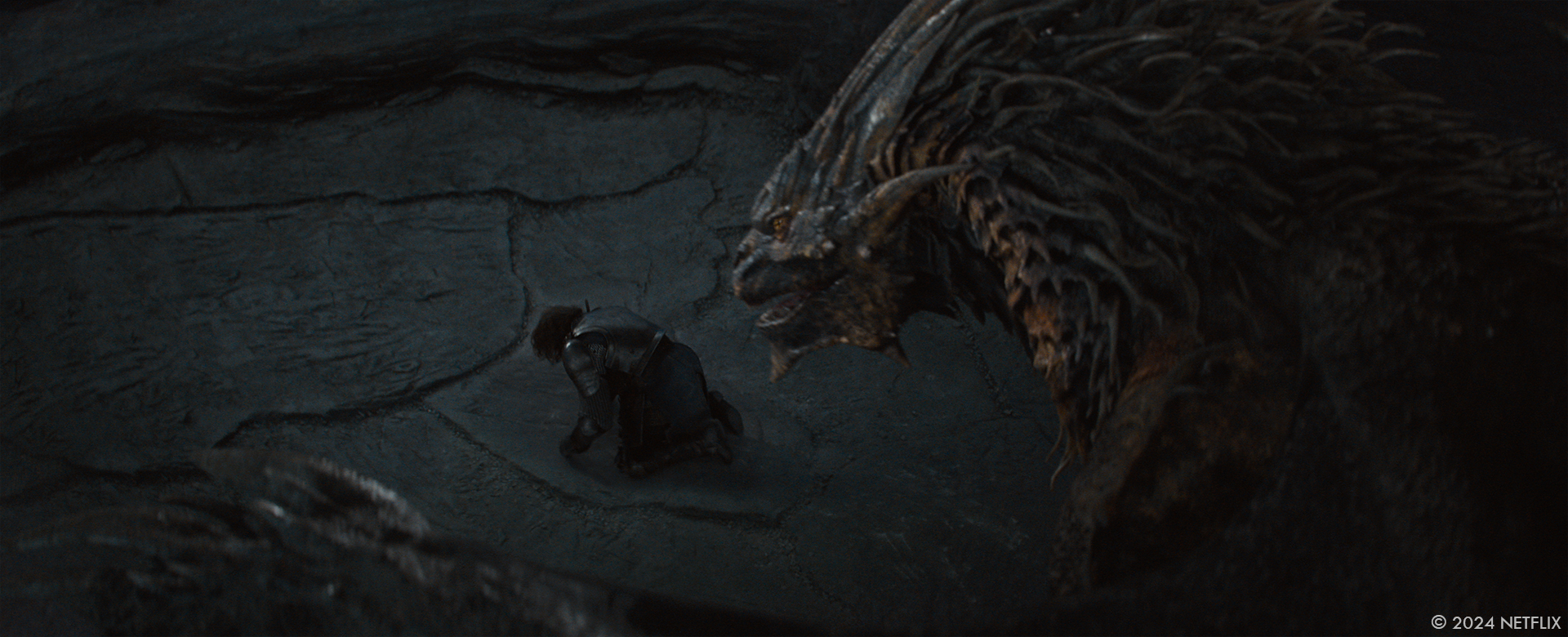
What were some of the biggest challenges you faced during the creation and animation of the dragon?
One of the biggest challenges was animating the dragon in flight, manoeuvring such a massive creature effortlessly through a labyrinth of pillars whilst ensuring she moved effortlessly. We looked at how she could use the environment to gain extra speed, altitude and even change direction rapidly. Another challenge was balancing the dragon’s speed, weight and her agility. This was a tricky combination at times where she needed to execute a particular action quite quickly, however it was a fine line of being either too fast and/or not looking heavy enough for her size.
The last challenge was the facial animation which was its own unique beast. From early on in the project it was made very clear to ‘not make her too human’ yet we still needed to see her speaking dialogue and convey readability for the audience. The solution was to review the audio for each shot meticulously, searching for any emphasis on a particular vowel or syllable, which resulted in each dialogue shot being custom made based on the audio recording.
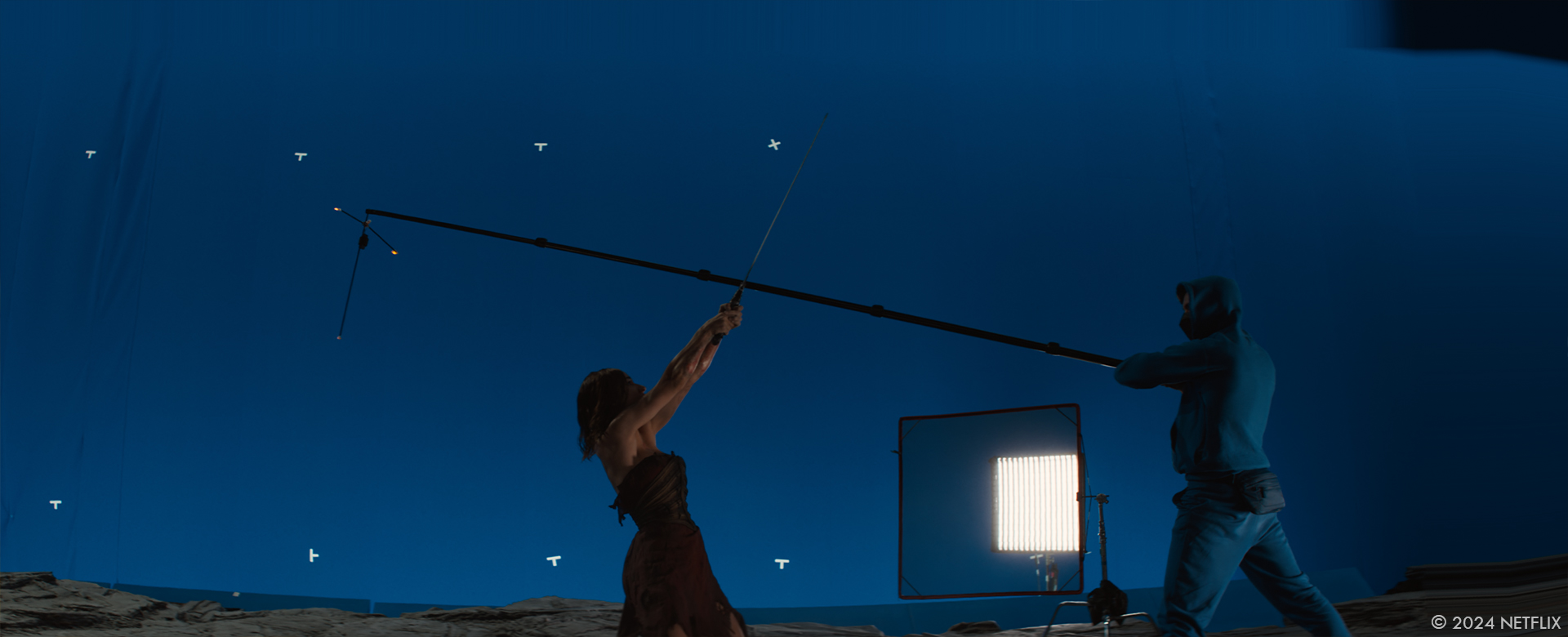
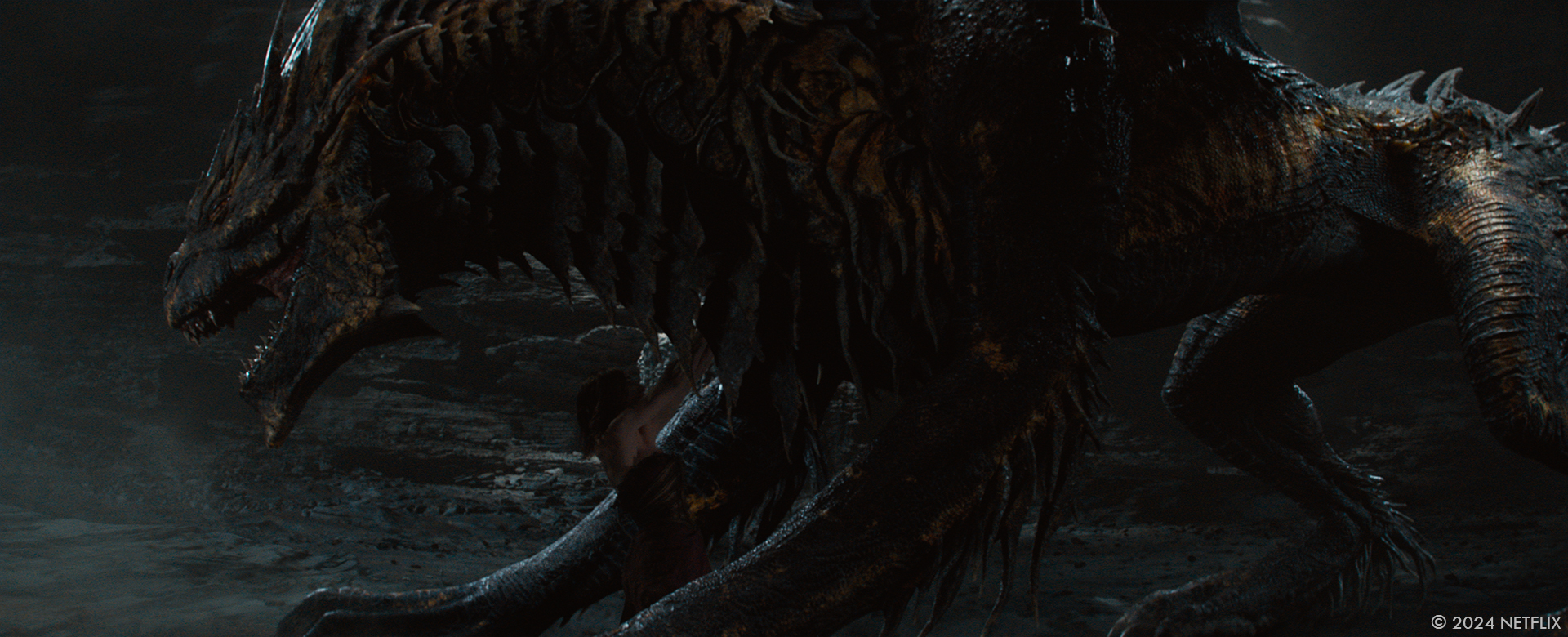
How did you handle the animation challenge when the dragon is flying?
We created a custom variable attribute within the rig where an animator could set the dragon’s wings to ‘flight-mode.’ This restructuring of the rig’s wing armature behaviour simplified the animation process, ensuring more intuitive control over the wing’s movements.
Additionally, the animation team also utilised a 3 camera ‘follow-cam’ module, which our animators could constrain to the dragon, and view it from multiple angles simultaneously within Maya. This proved very helpful in evaluating the dragon’s body and flight mechanics, particularly during sequences where the dragon covered vast distances rapidly in 3D space. These tools enhanced our ability to achieve dynamic and convincing flight animation, elevating the realism and the impact of the dragon’s aerial sequences.
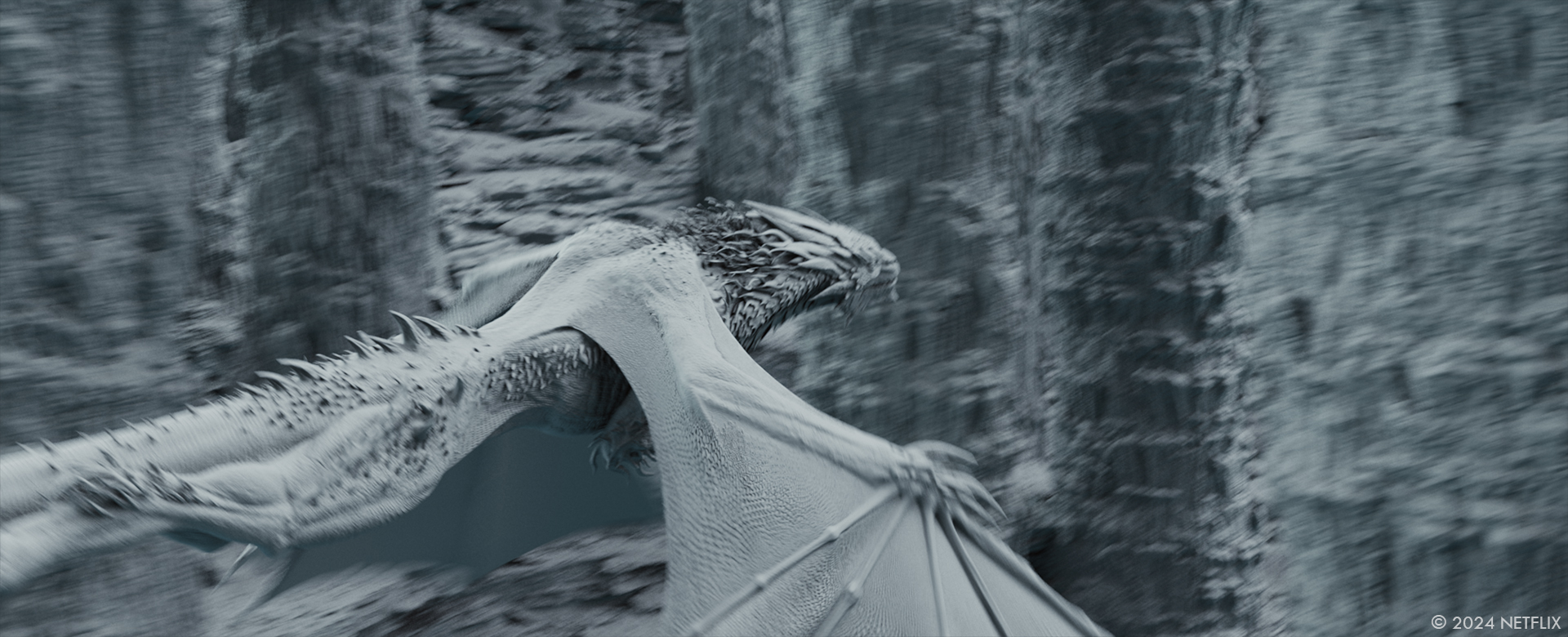
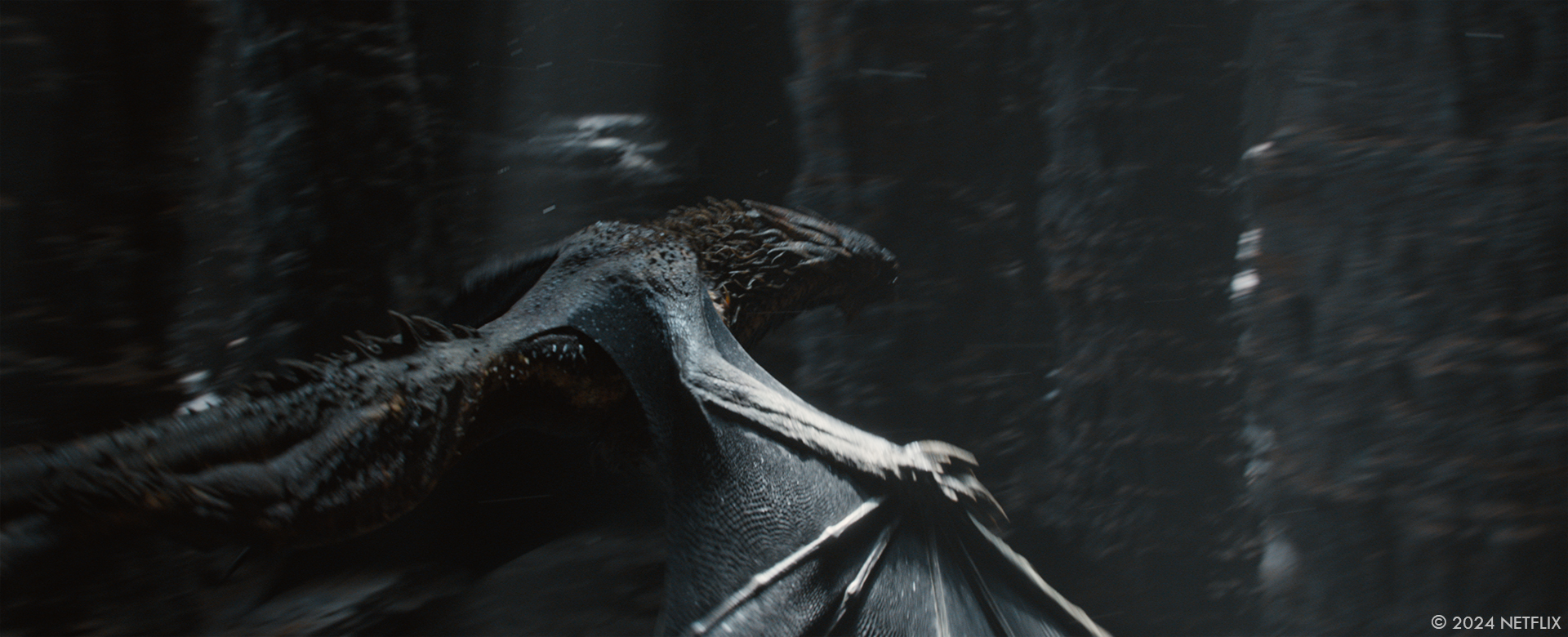
Can you elaborate on the collaborative process between the design, animation, and development teams in bringing the dragon to life?
As previously mentioned, our team consisted of experts in every part of the process that were dedicated to bringing this dragon to life. Each member was very involved in contributing great ideas and solutions from their field. It was crucial to create a sense of unity within the subteams, whilst also keeping a focus on the big picture. In this respect, Zach Du Toit and Sam Churchill, the CG supervisors did an amazing job in steering the cross-departmental collaboration and driving us to success.
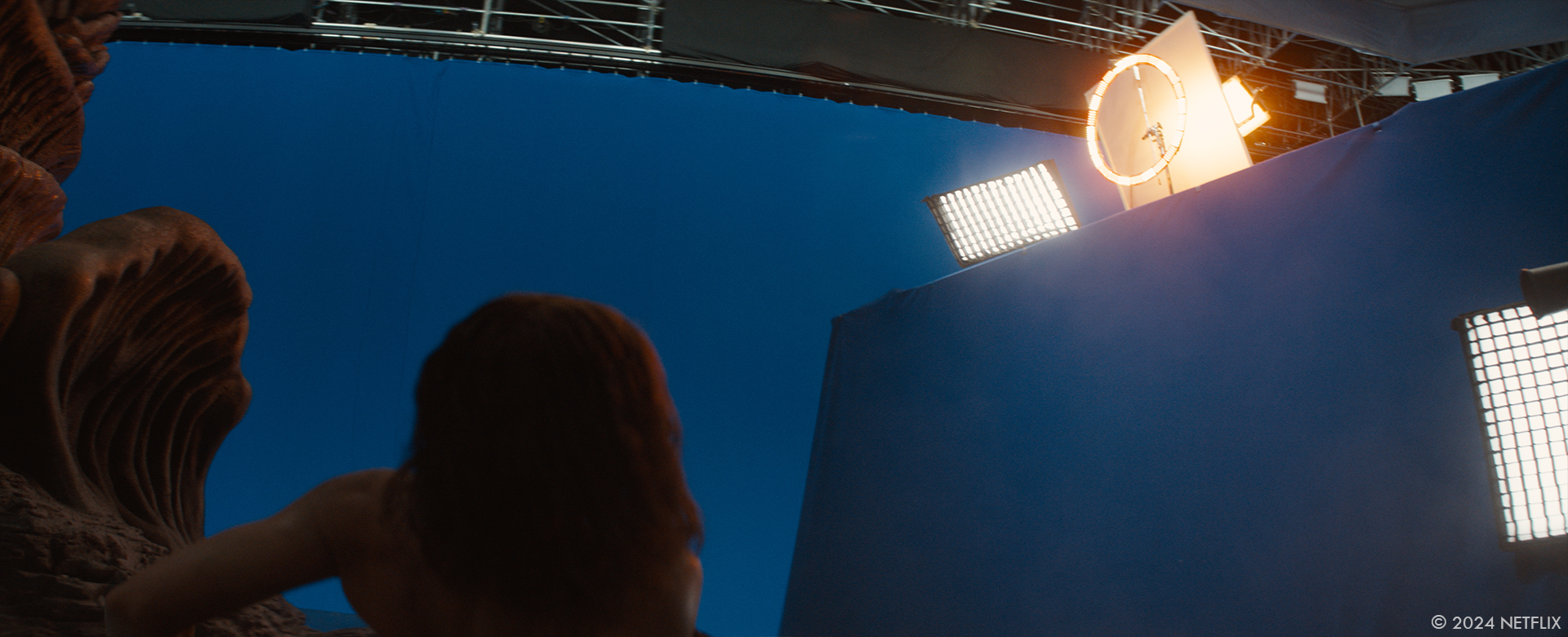
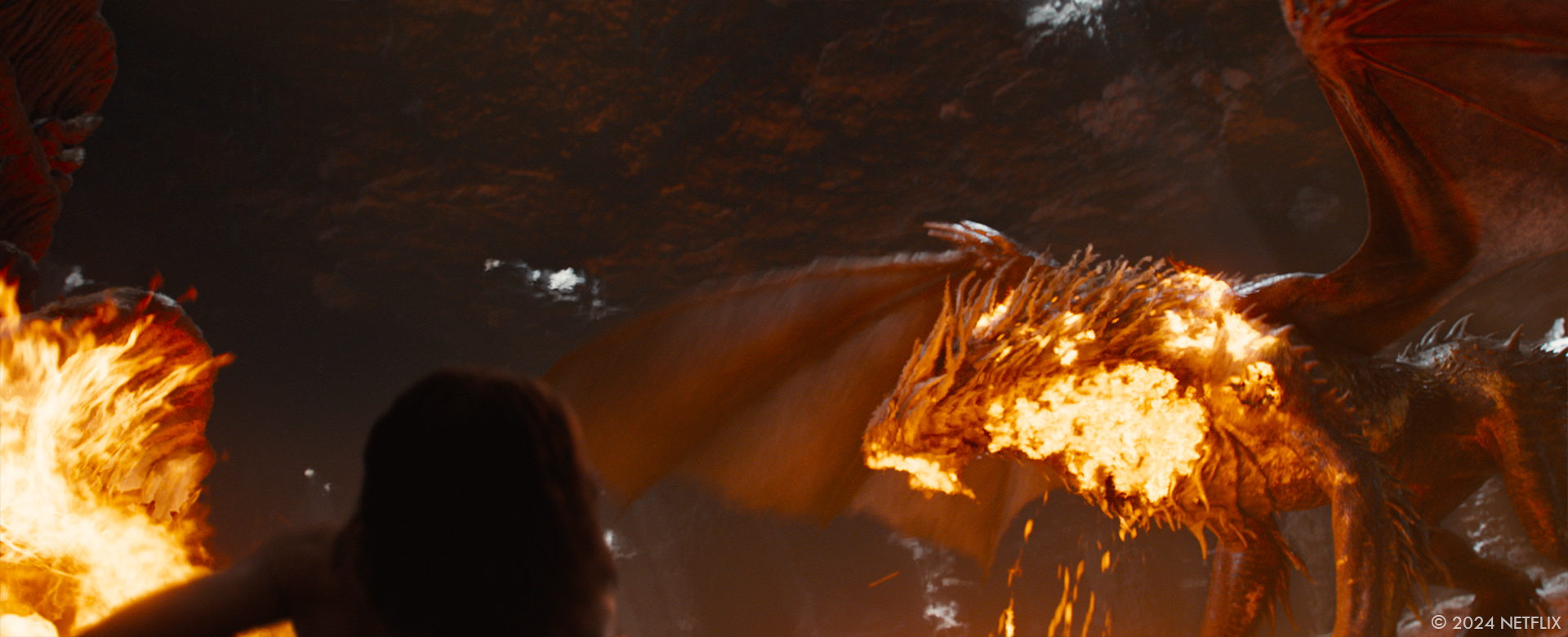
Can you tell us more about the fire breathing challenges and animation?
Danielle Brooks, our FX Supervisor, and her team were involved in the early stages of this project, focussing on developing the look of the fire breathing. The effect consists of two elements: there is what we called the lava, which is the liquid element and then the more gaseous fire, which was emanating from it. There are a few shots throughout the film where we needed specific coordination between the animation and the FX team. However, the most challenging shot was at the end where the dragon spits fire at Elodie and the fire rebounds back at it. Achieving seamless integration required precise positioning of the dragon and the angle of her head in each shot. Through close collaboration, both teams worked hand in hand to ensure a natural and coordinated flow between animation and FX, crucial for advancing the narrative.
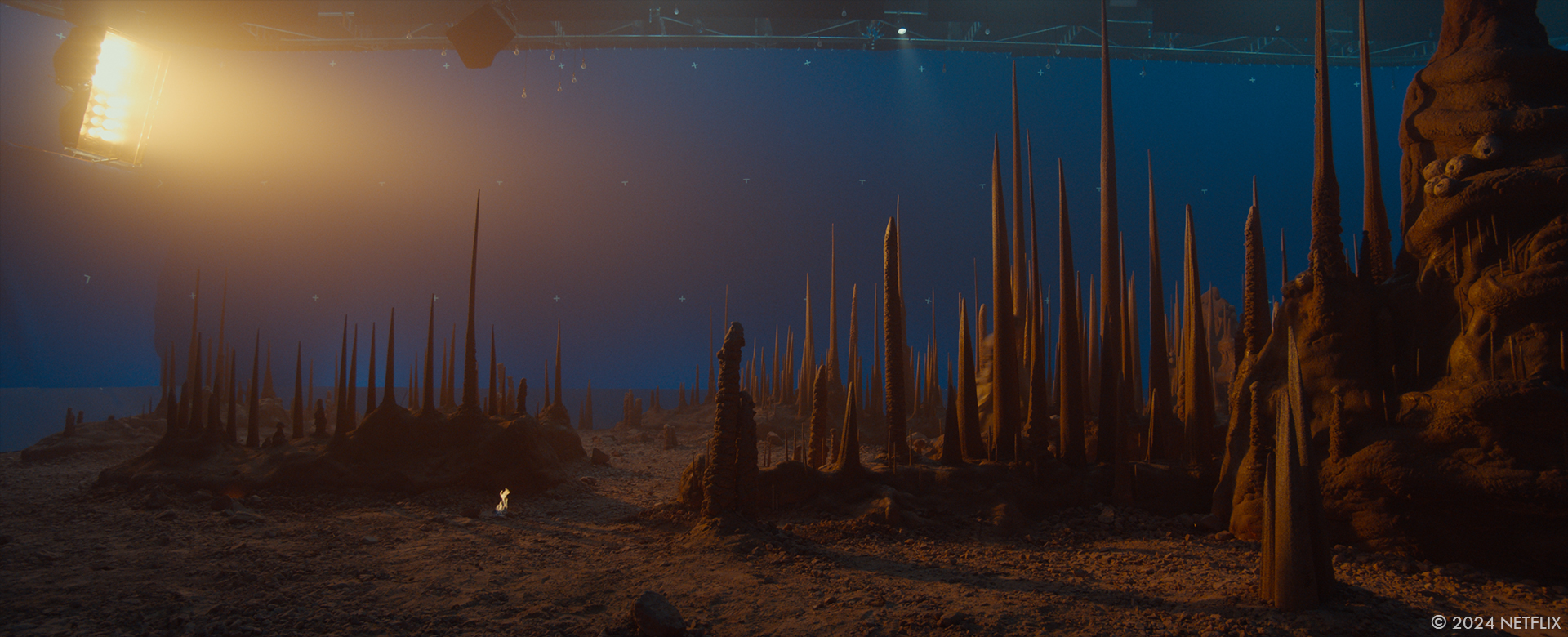
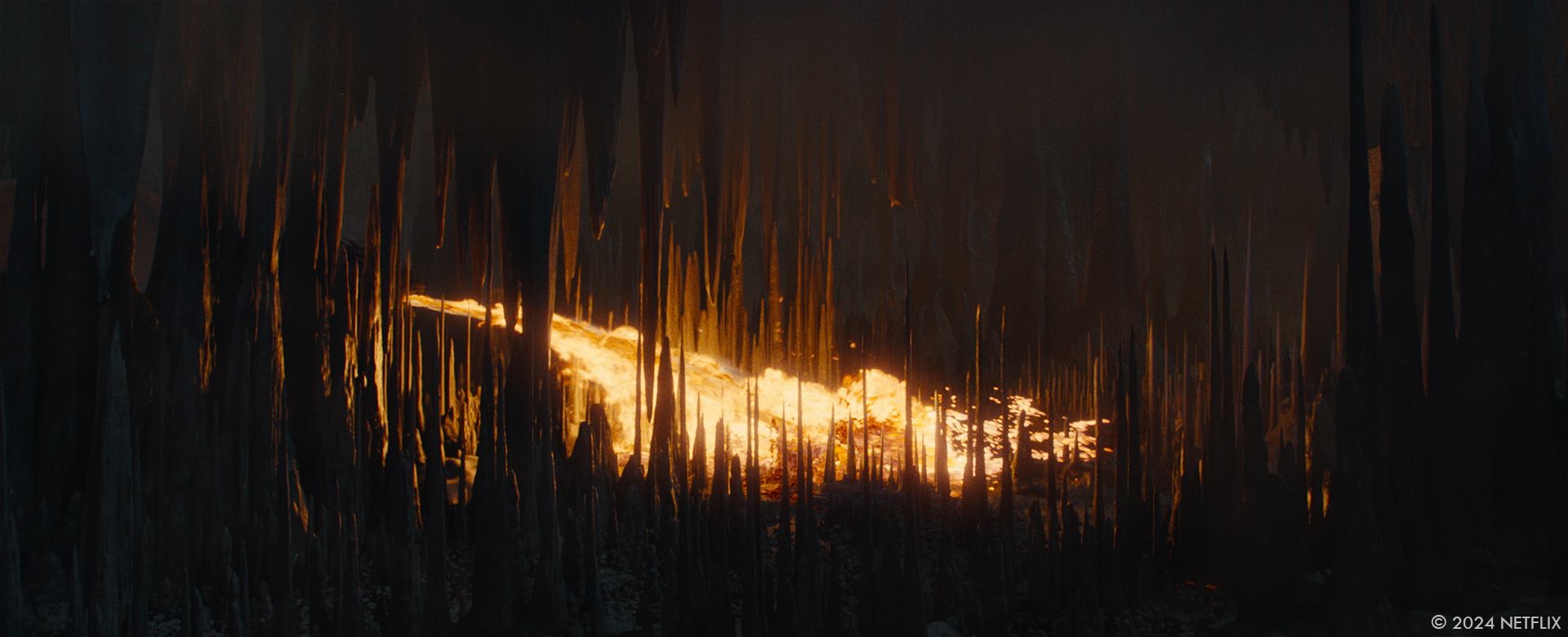
Most of the scenes with the dragon happen inside the mountain. How does that affect your work and especially the lighting?
We needed to find justification for the presence of light within the cave, striking a delicate balance between feeling total darkness and visibility of the characters and the cave. Because it was quite intricate we needed the flexibility to adjust lighting on a per-shot basis; each angle had to be designed to allow us to read action, shape and depth within the cave.
As customary, we started by working on key shots to set the mood and the tone of each sequence. However, we recognised that we couldn’t uniformly apply the lighting setups from these key shots across the entire project. We used those key frames more as reference, as for each shot the light on the dragon and the pool of lights on the environment had to be adjusted. For instance, for the light beam we set up a tool that allowed us to create cracks in the cave ceiling according to where we needed the light to hit the ground – so the lights were leading the cracks in the environment.
We always had to look at each individual shot within the sequence and find the best compromise between continuity and serving the specific storytelling and mood requirements. The decisions made for one shot had repercussions on the others in the sequence, so it was a puzzle to solve, especially for long sequences such as the temple cave. The Comp team also played a crucial part in finding the final mood, by balancing the light in frame.
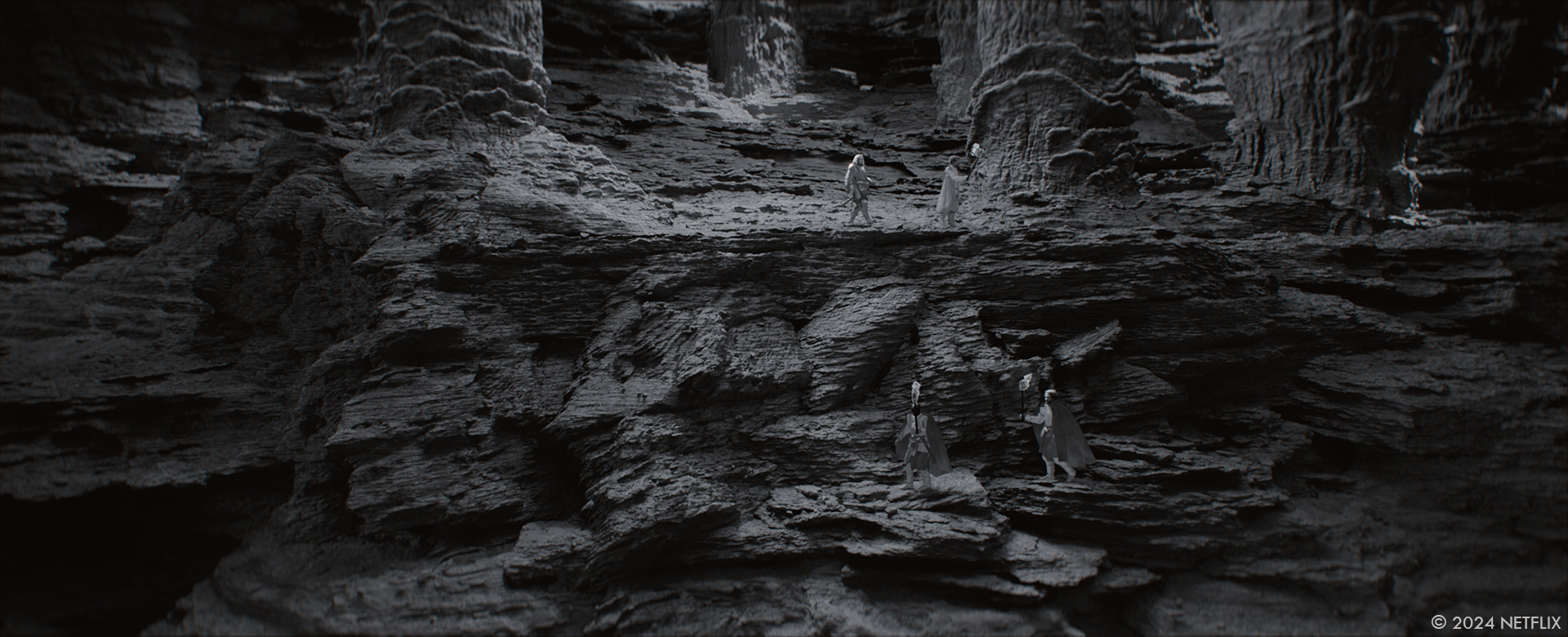
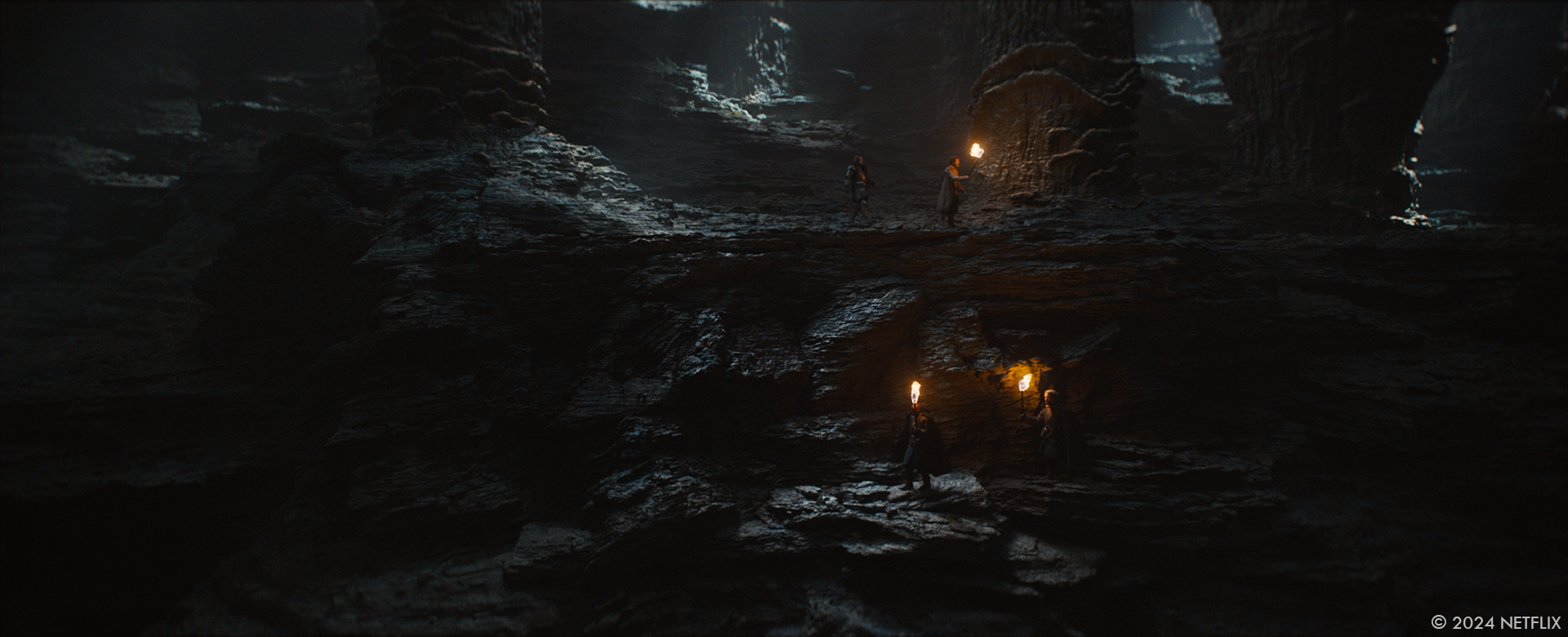
Which sequence or shot was the most challenging?
The primary challenging sequence was undoubtedly the temple cave, specifically the shot where the dragon crashes the guide to the ground and we reveal the dragon fully for the first time. We focussed on this sequence and this shot in particular at the start and we knew it would determine the look and the mood for the entire project. It served as the cornerstone for developing all the tools and knowledge that would then be applied to subsequent scenes, adding to the complexity of the task. I guess the other challenging sequence was when the fire rebounds onto the dragon. From a technical standpoint these shots were incredibly intricate, requiring seamless coordination between Animation and FX, with each influencing the other.
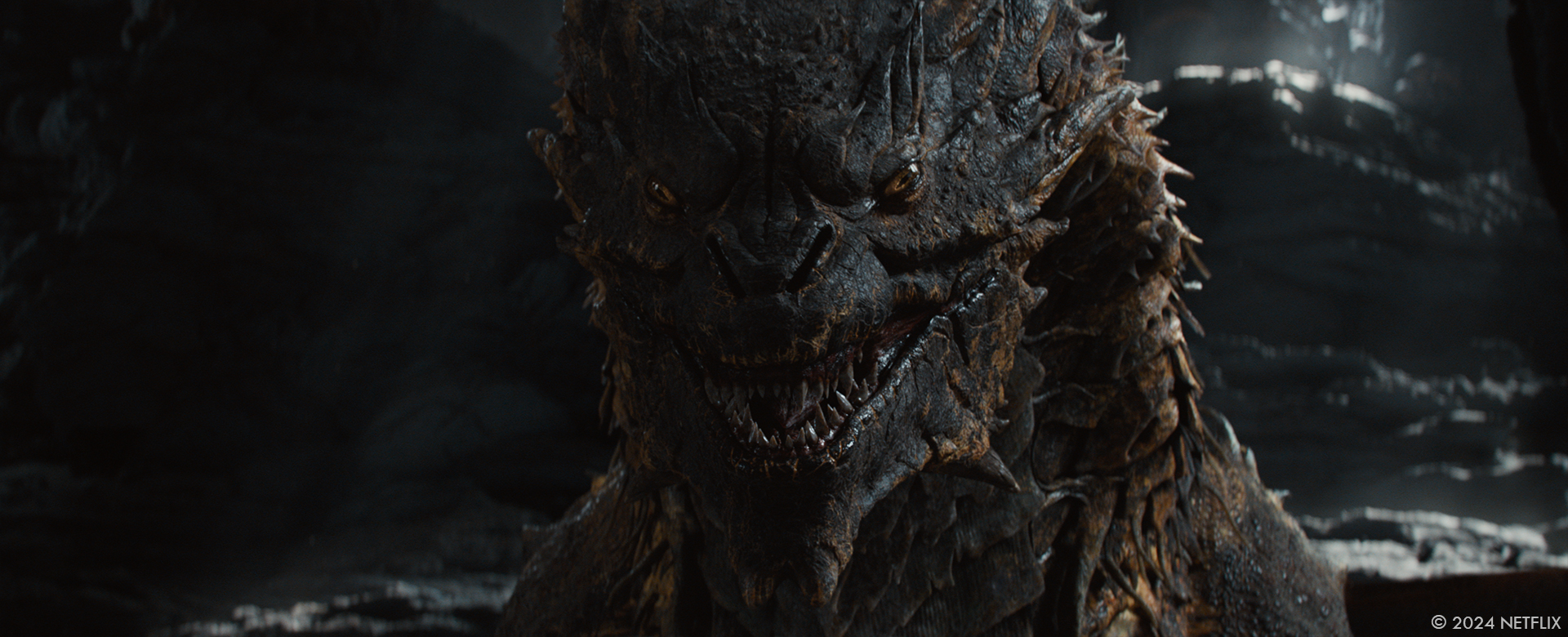
Is there something specific that gives you some really short nights?
The shortest nights for me on the project were the nights until the point we found our way into the desired look, with some key shots where the dragon felt tangible and present, and the cave set the right mood.
What is your favourite shot or sequence?
I love the sequence where Elodie escapes the dragon until she reaches a hole atop a pillar. In such a short amount of time there is such a diverse variety of shots, ranging from closeups of the dragon to expansive flight sequences.
What is your best memory on this show?
My favourite moment is when I felt that the whole team had really found their groove. The team was still working hard, but I saw that moment when everybody started to understand the direction we were heading in terms of animation, look, FX etc.. It felt like a well oiled machine; every member, from artists to the production team, contributed to this powerful momentum and it was amazing to be a part of.

How long have you worked on this show?
I would say roughly a year.
What’s the VFX shots count?
427 finalled shots and 166 of them have the dragon.
What is your next project?
My primary focus isn’t tied to a single project at the moment; instead I dedicate my time to overseeing all projects that come through the Paris studio. This allows me to manage my time more efficiently and provide creative guidance as required across various projects.
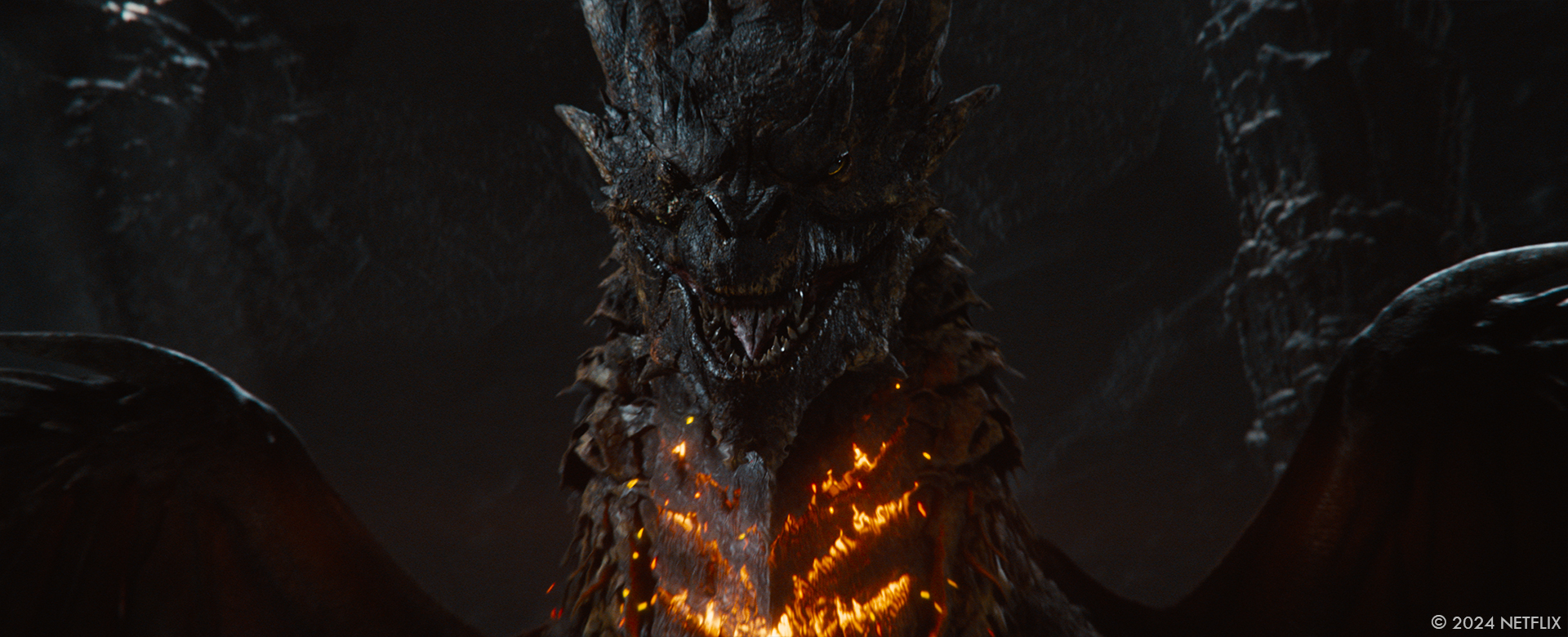
What are the four movies that gave you the passion for cinema?
I think the first time I have been truly captivated by a film was with Stanley Kubrick’s A Clockwork Orange. I think I was way too young to see it at the time, and I didn’t even know who Kubrick was, but I was mesmerised by it. Then obviously 2001: A Space Odyssey further solidified my admiration for his work. I have another amazing memory from my youth of seeing The Night Of The Hunter by C. Laughton. Michael Haneke’s Funny Games and Alfred Hitchcock’s Psycho also left lasting impressions on me.
A big thanks for your time.
WANT TO KNOW MORE?
One of Us: Dedicated page about Damsel on One of Us website.
Nigel Denton-Howes: Here’s my interview of Production VFX Supervisor Nigel Denton-Howes.
Netflix: You can watch Damsel on Netflix now.
© Vincent Frei – The Art of VFX – 2024
© Vincent Frei – The Art of VFX – 2024




